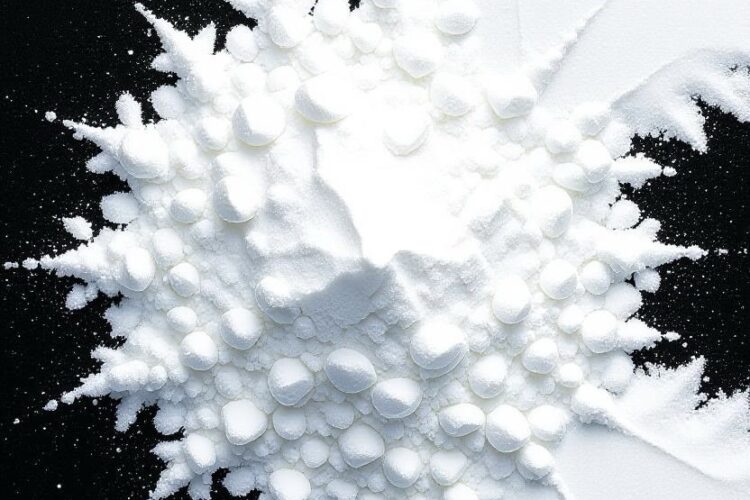Creatine monohydrate, a well-researched supplement, boosts energy production by increasing ATP and phosphocreatine in muscles and the brain. It enhances athletic performance, muscle strength, and exercise recovery, making it ideal for resistance training. For older adults, it fights sarcopenia and may improve bone density. It also supports brain health, improving cognitive function, alertness, and mood, especially in vegetarians or those with stress. In rare disorders like AGAT, GAMT, or OAT deficiencies, it restores creatine levels, easing symptoms. A typical dose is a 20-25g loading phase for 5-7 days, then 3-5g daily. Side effects like water retention or nausea are minor, and it’s safe for most, though those with kidney issues should consult a doctor. Choose third-party tested monohydrate over less effective forms like ethyl ester. With proper use, it’s a powerful tool for physical and mental health across all ages.
Long Version
Creatine monohydrate stands out as one of the most researched and widely used supplements in the realm of health and fitness. Naturally produced in the body from amino acids like glycine and arginine, creatine plays a pivotal role in energy production by helping regenerate adenosine triphosphate (ATP), the primary energy currency for cells. As an ergogenic aid, it boosts phosphocreatine levels in muscles and the brain, enhancing short-term, high-intensity activities. This supplement has garnered attention not just for athletic performance but also for broader health benefits, including muscle strength, brain health, and support for specific medical conditions. While generally safe, understanding its dosage, potential side effects, and quality concerns is crucial for informed use.
How Creatine Monohydrate Works in the Body
At its core, creatine monohydrate facilitates energy production by increasing creatine stores in skeletal muscle and other tissues. During intense exercise, phosphocreatine donates a phosphate group to ADP, rapidly reforming ATP to sustain power output and delay fatigue resistance. This mechanism is particularly vital in resistance training, where it supports explosive movements and exercise recovery. Beyond muscles, creatine influences glycogen storage, helping replenish energy reserves post-workout, and exhibits antioxidant effects that combat oxidative stress during physical stress. In the brain, it similarly bolsters ATP availability, potentially improving cognitive function and alertness, especially under metabolic demands like sleep deprivation or aging.
Key Health Benefits for Physical Performance and Muscle Health
For athletes and fitness enthusiasts, creatine monohydrate is a proven enhancer of athletic performance. It increases muscle strength and power output, allowing for more reps or heavier lifts in resistance training sessions. Studies show it accelerates exercise recovery by reducing muscle damage and inflammation, making it ideal for high-volume training. In older adults and the elderly, where sarcopenia—the age-related loss of muscle mass—poses a significant risk, supplementation combined with resistance training can preserve lean mass and improve functional strength. Emerging evidence also links it to better bone mineral density, potentially mitigating osteoporosis risks in aging populations by influencing bone remodeling processes. For women experiencing menopause symptoms, such as hormonal shifts affecting muscle and bone, creatine may offer supportive benefits in maintaining vitality and reducing fatigue.
Cognitive and Neurological Advantages
Creatine monohydrate’s influence extends to brain health, where it supports cognitive function and mood enhancement. By elevating brain creatine levels, it enhances energy availability for neurons, leading to improved alertness and processing speed, even after a single dose in some cases. Research indicates benefits in reducing mental fatigue and boosting memory, particularly in stressed individuals or those with low baseline creatine stores, like vegetarians. In clinical settings, it shows promise for conditions like mild traumatic brain injury or depression, where it may attenuate symptoms by stabilizing energy metabolism. Pilot studies in Alzheimer’s disease suggest potential improvements in mitochondrial function and cognition, though more research is needed.
Therapeutic Role in Genetic and Metabolic Disorders
In rare creatine synthesis deficiencies, such as AGAT deficiency, GAMT deficiency, and OAT deficiency (also linked to conditions like gyrate atrophy), creatine monohydrate serves as a targeted treatment. These disorders impair endogenous creatine production, leading to neurological and muscular impairments. Oral supplementation effectively restores brain and muscle creatine levels, alleviating symptoms like intellectual disability, seizures, and muscle weakness. For instance, in GAMT deficiency, it reduces guanidinoacetate accumulation, a neurotoxic byproduct, while improving overall function. Long-term use in these cases has demonstrated safety and efficacy, often requiring higher doses to bypass the blood-brain barrier.
Optimal Dosage and Supplementation Strategies
To maximize benefits, a typical protocol involves a loading phase of 20-25 grams daily (divided into 4-5 doses) for 5-7 days to saturate creatine stores, followed by a maintenance dose of 3-5 grams per day. This approach is effective for most, though some respond well to lower, consistent intake without loading. Factors like body weight, diet (e.g., meat-eaters have higher baseline levels), and activity influence needs—aim for about 0.03 grams per kilogram of body weight daily for maintenance. Hydration is key during use, as creatine draws water into cells, potentially causing temporary water retention.
Comparing Forms of Creatine
While creatine monohydrate is the gold standard due to its proven bioavailability and affordability, alternatives like creatine ethyl ester and buffered creatine monohydrate claim advantages. Creatine ethyl ester is marketed for faster absorption but studies show it degrades quickly in the stomach, offering no superior benefits over monohydrate. Buffered forms aim to reduce acidity and side effects like nausea, yet evidence suggests limited improvements in efficacy or tolerability compared to standard monohydrate. Overall, monohydrate remains the most evidence-backed choice, with alternatives often lacking robust support.
Safety Profile, Side Effects, and Considerations
Creatine monohydrate boasts a strong safety record, with decades of research showing no major risks at recommended doses for up to five years. Common side effects include water retention, which may cause slight weight gain, and occasional muscle cramping or nausea, often mitigated by proper hydration and dosing. Concerns about kidney function have been debunked in healthy individuals, though those with pre-existing renal issues should consult a doctor. No credible evidence links it to tumor progression; in fact, some studies suggest protective effects via antioxidant mechanisms. Quality matters—poorly manufactured products may contain contaminants like dicyandiamide, dihydrotriazine, or heavy metals, especially from unregulated sources. Opt for third-party tested brands to minimize risks.
In summary, creatine monohydrate offers multifaceted health benefits, from bolstering athletic performance and combating sarcopenia in older adults to enhancing brain health and treating creatine synthesis deficiencies. With appropriate dosage and attention to purity, it serves as a versatile, evidence-based tool for optimizing well-being across the lifespan.
Hashtags For Social Media
#CreatineMonohydrate #FitnessSupplements #MuscleGrowth #WorkoutBoost #AthleticPerformance #StrengthTraining #ExerciseRecovery #BrainHealth #CognitiveBoost #FitLife #GymEssentials #HealthAndFitness #MuscleBuilding #PowerOutput #EnergyBoost #SarcopeniaSolution #BoneHealth #MenopauseSupport #CreatineBenefits #SupplementGuide #FitnessGoals #HealthyAging #MentalClarity #WorkoutRecovery #CreatineDosage #GymLife #PerformanceEnhancer #FitAndStrong #HealthOptimization #ViralFitness
Related Questions, Words, Phrases
what is creatine monohydrate | how does creatine monohydrate work | benefits of creatine monohydrate | creatine monohydrate side effects | is creatine monohydrate safe | creatine monohydrate for muscle growth | best creatine monohydrate dosage | creatine monohydrate for brain health | does creatine monohydrate improve strength | creatine monohydrate for older adults | can creatine monohydrate help cognition | creatine monohydrate vs ethyl ester | how to take creatine monohydrate | creatine monohydrate for exercise recovery | does creatine monohydrate cause water retention | creatine monohydrate for women | creatine monohydrate and kidney health | best creatine monohydrate brands | creatine monohydrate for sarcopenia | how creatine monohydrate boosts energy | creatine monohydrate for depression | creatine monohydrate loading phase | creatine monohydrate and bone density | creatine monohydrate for menopause | risks of creatine monohydrate contaminants | creatine monohydrate for athletes | does creatine monohydrate improve mood | creatine monohydrate for AGAT deficiency | creatine monohydrate maintenance dose | creatine monohydrate and antioxidant effects | how creatine monohydrate supports ATP | creatine monohydrate for gyrate atrophy | creatine monohydrate and muscle cramps | benefits of creatine monohydrate for elderly | creatine monohydrate for fatigue resistance






